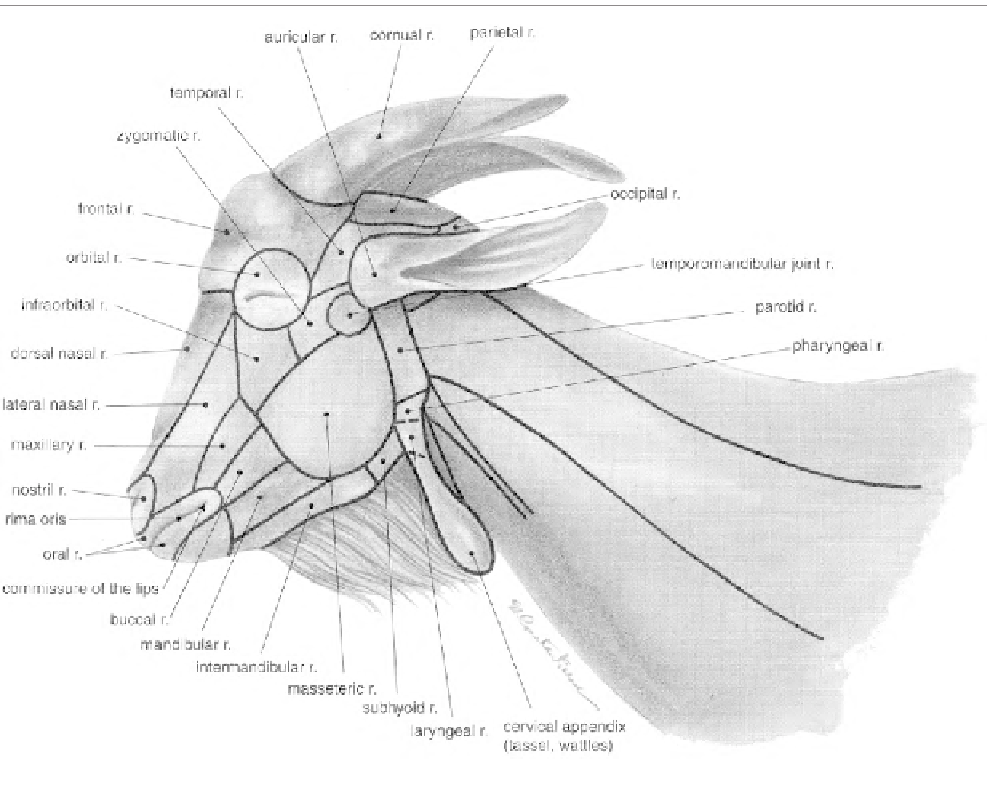Agriculture Reference
In-Depth Information
Figure 6.6
Anatomical region of the head (lateral side).
THE SKELETAL SYSTEM (THE BONES)
The bones are rigid yet elastic structures that articulate
with other bones or cartilages to form the skeleton.
They are covered by a connective tissue coat called the
periosteum. At the periphery all bones are compact. There
is a lamellar spongy tissue inside the bones. There are
three major types of bones: long, short, and irregular. The
long bones (the majority of the bones of the limbs) have
a body and one or two articular extremities, and are cen-
tered by a medullary canal. The short bones (the carpal and
the tarsal bones) do not have a medullary canal. The irregu-
lar bones (the vertebrae) do not fi t in any geometrical
shape.
The skeletal system of the goat, as of all of the domestic
mammals, consists of the axial skeleton and the appendicu-
lar skeleton.
The Axial Skeleton (the Skull, the Vertebral Column,
the Sternum, and the Ribs)
T
HE
S
KULL
As a mammalian type, the skull of the goat consists of
several bones fused with each other, except the mandibles
(usually called “mandible”), the only bones with mobility
against the rest of the skull. All bones of the skull are sym-
metrical, except the vomer, ethmoid, sphenoid, and occipi-
tal bones. In addition, there is a hyoid apparatus, consisting
of small bones and located between the tongue, the
pharynx, and the larynx. The skull of the goat is different
from that of the large ruminants and even the sheep. As a
common characteristic of a ruminant skull, the goat lacks
the superior incisive teeth. The skull of the goat (except
the mandible; see Figure 6.25) is illustrated in Figures 6.7






